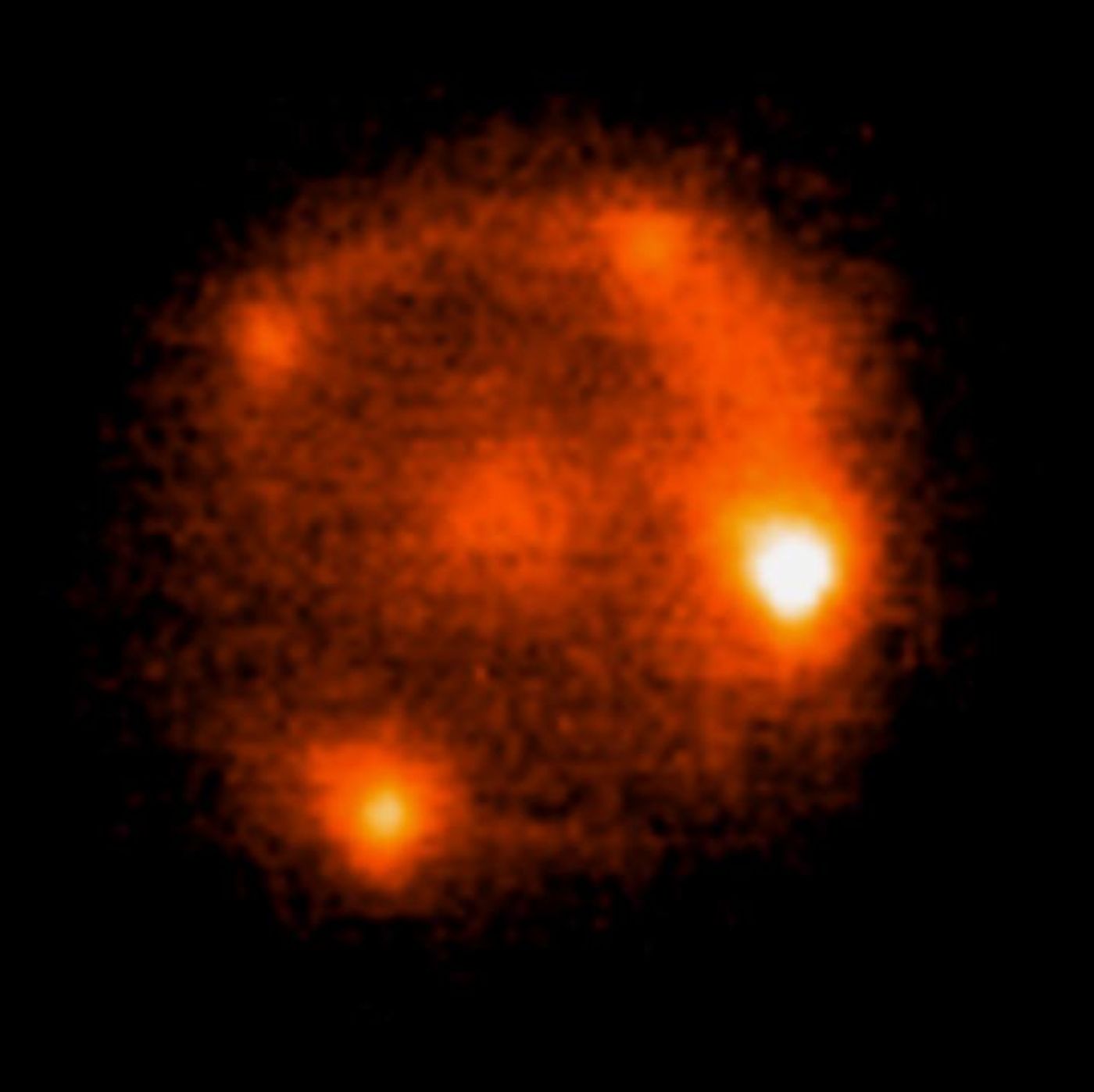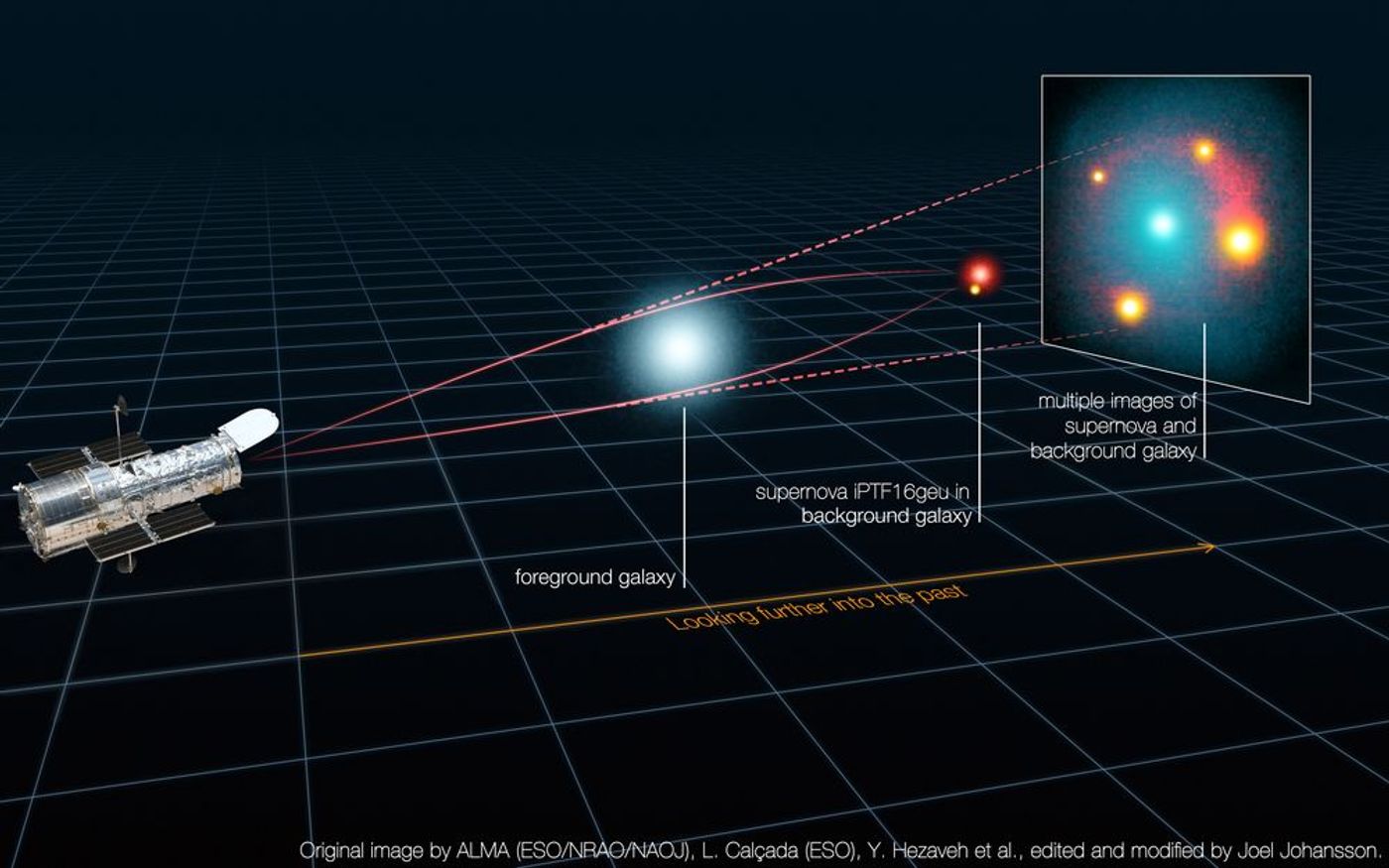Gravitational Lensing Effect Multiplied Images of This Supernova
Imagine looking through space and seeing a super-bright supernova that you weren’t expecting to see. Then, after taking measurements, you come to the conclusion that the supernova is way brighter than it really should be. Something isn’t adding up, so you decide to investigate.
This is exactly what happened to researchers observing a supernova through California’s Intermediate Palomar Transient Factory (iPTF), and as reported in the journal Science, something was happening that caused distortions in the images they were receiving.
For instance, not only was the supernova over 50 times brighter than it was supposed to be based on the distance that was recorded, but astronomers were reportedly seeing quadruple the supernova they were actually supposed to be seeing.
Image Credit: ESA/Hubble, NASA
Looking into the data even more, the astronomers discovered that it was an optical illusion being produced by a gravitational lensing effect. This happens when something massive passes in front of a distant object that we observe with our space telescopes; in this case, Hubble.
Related: This exoplanet discovery was made possible by microlensing
The massive object was a galaxy that was passing in front of the supernova, and the gravitational lensing acts as a magnifier, intensifying the light emitted from the supernova as well as producing up to four different images of it when there was only ever one to begin with.
Dubbed iPTF16geu, the supernova is also a type la supernova, which is important to astronomical research. Because these types of supernova have a brightness is always constant and never fluctuating, they are an important tool for studying the expansion of the universe.
The rate of expansion of the universe today is heavily debated, but thanks to the fact that four different sources of light were observed as a result of the gravitational lensing, there are at least four different reference points that could help astronomers to learn more about the debated topic.
Related: The universe might not have any dark energy after all
"We are puzzled by the great amplification of the supernova light," said study lead author Ariel Goobar from the University of Stockholm in Sweden. "We would have been about 1000 times more likely to find one with only 5 times the amplification. Why haven’t we seen those? Were we just lucky to find a system with 52 times the amplification?"
Interestingly, iPTF shouldn’t have even been able to see the distant supernova. Had it not have been for the galaxy passing in front of it and acting as a magnifying lens, it might have gone unseen for much longer, if not an eternity. Astronomers chalk this up as a stroke of luck.
Source: EurekAlert










